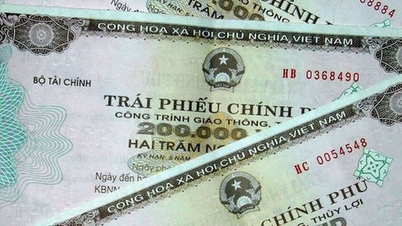In the downward trend of seafood exports, tra fish is a product with many prospects for recovery thanks to positive signals from the US and China.
According to the Vietnam Association of Seafood Exporters and Producers (VASEP), by the end of January, Vietnam's seafood exports reached only nearly 600 million USD, down 31% over the same period last year. Of which, squid, octopus and other marine fish increased slightly, but pangasius, shrimp and tuna all decreased sharply by double digits, with pangasius down 50%. The downward signal of pangasius consumption has been clear since the last quarter of 2022, with a turnover of 475 million USD, down 12% over the same period in 2021.
However, according to Vasep's analysis, compared to other industries, pangasius still has a positive outlook in 2023, thanks to positive signals from two major markets, China and the US. Last year, these were the two main trading partners, accounting for 30% and 23% of pangasius exports, respectively.
For China, the opening of its market early last month will help restore consumer confidence, thereby boosting trade between the country and Southeast Asia, according to a recent assessment by HSBC Asia- Pacific co-CEO David Liao.
The decision to open the market has helped many Vietnamese products to be exported to this market, including tra fish. Last year, China spent 712 million USD to buy tra fish, making it the largest seafood product (40%) of Vietnam consumed by this country.
According to Vasep, although China's lifting of anti-epidemic restrictions has not brought about a strong recovery in seafood orders in the first month of the year, after a few months, this market will adapt and see a strong explosion in demand in consumption segments.
"Chinese people tend to prefer pangasius over tilapia. Importing and exporting seafood is now easier. Freight costs have also dropped below pre-pandemic levels, further facilitating trade," said Ms. Le Hang, an expert at Vasep.
For the US market, the supply and demand for white fish is favorable for pangasius. Experts and traders in the US market are optimistic about the demand for pangasius and tilapia in this market this year.
Vasep assessed that both species have suitable prices and stable supply. Especially during the Lenten season for Christians (from late February to mid-April), the demand for fish of all kinds will increase.
Meanwhile, pangasius has some advantage as the ban on Russia continues to reduce the supply of cod, a whitefish popular in the US. In addition, tilapia exports from China to the US are still somewhat limited.
In fact, on the first working day of the new year after the Lunar New Year holiday, Hung Ca prepared for an export order of 21 containers of pangasius fillets. Or at Vinh Hoan, nearly 10,000 workers also returned to production for new orders.
For the seafood export industry in general, Vasep assessed that exports will not be able to shine again in the first months of the year, but this is still an essential food item and demand cannot decrease too sharply.
SSI Securities also believes that the second half of the year could be a brighter time for the seafood industry. Specifically, China's reopening is a catalyst for the industry, with revenue from this market partially offsetting the decline in revenue from the US and EU, but not enough to bring about a chance for companies to recover profits in the first half of this year.
Meanwhile, inflation in consumer markets and a slow-moving inventory environment could remain a challenge in the coming months. SSI does not expect seasonal events such as the Super Bowl and Easter in the US to significantly reduce inventory levels. Therefore, the company's analysis team forecasts that it will take until the third quarter for inventory to be fully processed to generate new orders.
This year, Vietnam's export growth target is 6% compared to 2022, equivalent to 393-394 billion USD. Deputy Minister of Industry and Trade Do Thang Hai assessed this as an increase with "many challenges when world demand decreases and global trade continues to be difficult".
Vietnam's main export markets such as the US, EU... high inflation, reduced consumer purchasing power and supply chain shocks cause raw material prices to increase, leading to high commodity prices.
However, the leader of the Ministry of Industry and Trade said that Vietnam also has many advantages with a large open economy, many free trade agreements (FTAs) signed and in effect... If these opportunities are well utilized, Deputy Minister Hai believes that it will be a strong point for exports in this year that is forecasted to have many difficulties./.
(Q.D synthesis)



































































































Comment (0)